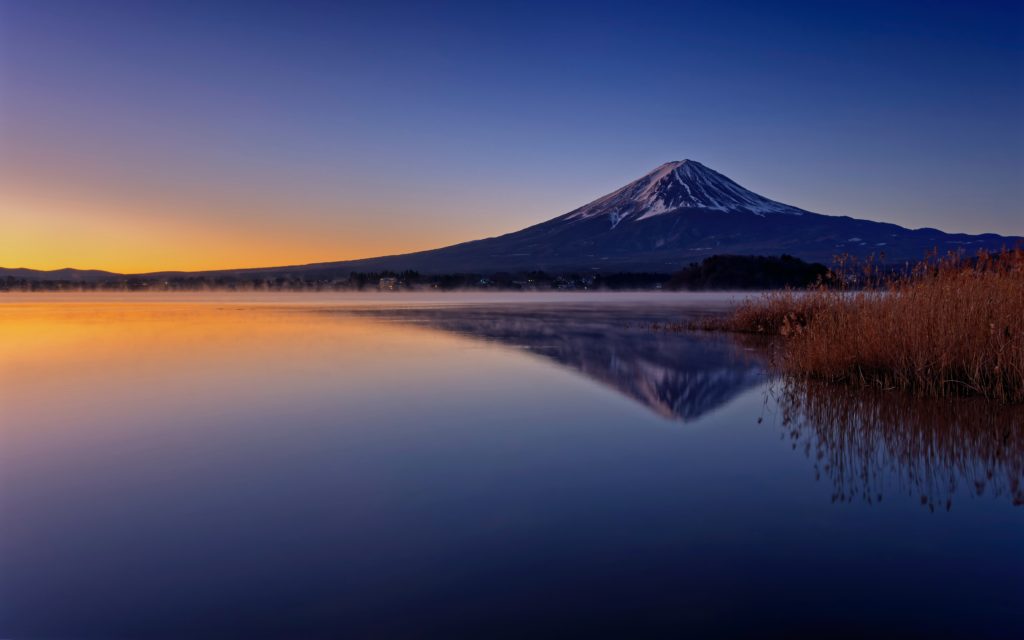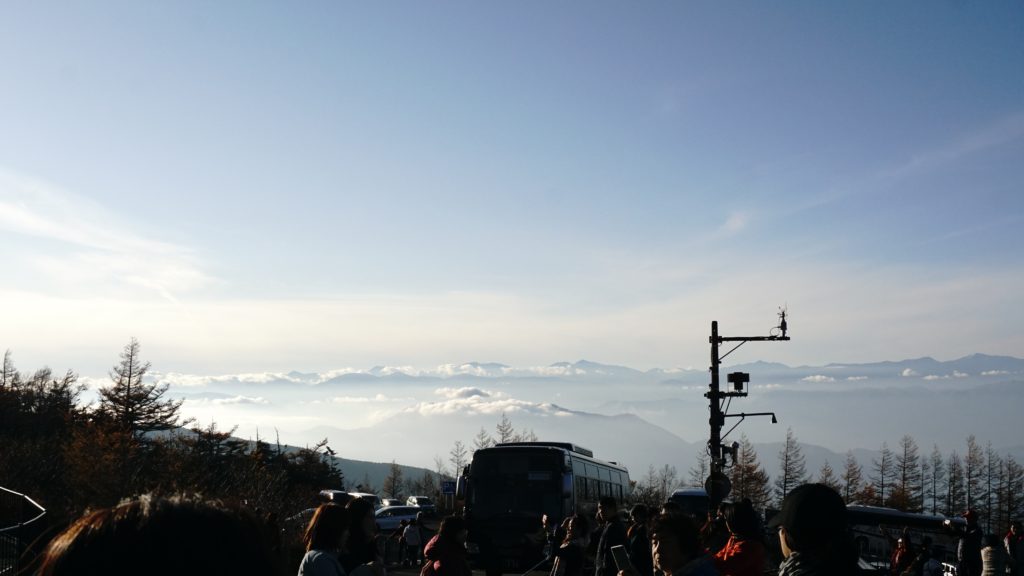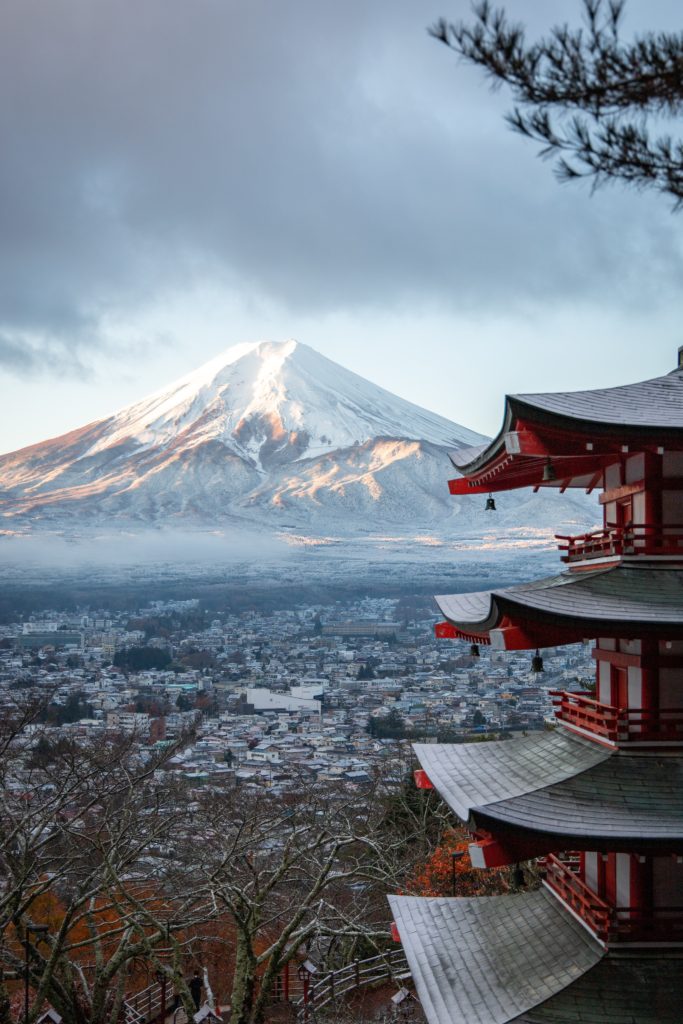Day Trip To Mt. Fuji from Tokyo (Travel Guide)
A day trip to Mount Fuji from the bustle of Tokyo is a fantastic way to experience the iconic Japanese landmark and its breathtaking surroundings. Mount Fuji, also known as Fujisan, is Japan’s highest mountain and a UNESCO World Heritage site. While it’s highly recommended to spend more time exploring the area if possible, a day trip can still offer a glimpse of its beauty. This is one of the best places to visit in Japan and the best way to spend a more peaceful day trip. So, below is the day trip to Mt. Fuji from Tokyo (travel guide).

Option 1: Tokyo to Base of Mt Fuji
The base of Mount Fuji, known as the Fuji Subaru Line 5th Station, is a popular starting point for climbers and tourists who want to experience the majestic mountain without trekking all the way to the summit. It is one of the several 5th stations on the mountain, each located on different sides and offering various routes to the summit.
Here are some key points about the base of Mount Fuji:
- Location: The Fuji Subaru Line 5th Station is situated at an altitude of approximately 2,300 meters (7,546 feet) above sea level. It is accessible by road and is located on the southeastern side of Mount Fuji. The station is about halfway up the mountain, making it a convenient starting point for climbers aiming to reach the summit.
- Facilities: The 5th Station is well-equipped with various facilities to cater to the needs of climbers and tourists. You’ll find several shops, restaurants, and souvenir stores where you can purchase climbing gear, snacks, and mementoes. It’s a great place to grab a quick bite to eat before starting your hike or to purchase last-minute essentials.
- Hiking Trails: From the Fuji Subaru Line 5th Station, there are several hiking trails that lead to the summit of Mount Fuji. The most common route is the Yoshida Trail, which is also the most developed and well-maintained trail. It is the route used by the majority of climbers and is generally open from early July to early September during the official climbing season.
- Climbing Season: As mentioned earlier, the climbing season for Mount Fuji typically runs from early July to early September. Outside of this period, climbing is highly discouraged due to harsh weather conditions, including heavy snow and extreme cold. During the official season, the mountain huts along the trail are operational, providing climbers with shelter, food, and rest areas.
- Sunrise Viewing: One of the most popular experiences at the 5th Station is watching the sunrise from the mountain. Many climbers begin their ascent in the late afternoon or evening to reach the summit in time for the breathtaking sunrise over the Japanese landscape.
- Views: The Fuji Subaru Line 5th Station itself offers stunning panoramic views of the surrounding landscapes, including the nearby Fuji Five Lakes (Lake Kawaguchi, Lake Yamanaka, Lake Sai, Lake Shoji, and Lake Motosu) and the surrounding forested areas.
Remember that weather conditions at higher altitudes can be unpredictable and can change rapidly, even during the climbing season. It’s essential to be well-prepared, physically fit, and equipped with proper hiking gear before attempting any hike on Mount Fuji. Additionally, respect the mountain and follow the guidelines set by the authorities to ensure a safe and enjoyable experience.
How to Get to 5th Station from Tokyo:
- Early Morning Departure: Start your day early to make the most of your trip. Consider taking a Shinkansen (bullet train) from Tokyo Station to Mishima Station, which takes around 1.5 hours. Alternatively, you can take a direct bus from Tokyo to one of the popular spots around Mount Fuji.
- Arrive at the 5th Station: Once you reach the base of Mount Fuji, head to the Fuji Subaru Line 5th Station. This is the most common starting point for hikers and tourists. The 5th Station is located at an altitude of about 2,300 meters (7,546 feet) and offers stunning panoramic views of the surrounding landscape. You can explore the souvenir shops and grab a bite to eat before starting your hike or taking in the views.
- Hiking (Optional): If you’re an avid hiker and in good physical condition, you can consider hiking to the summit of Mount Fuji. The ascent usually takes around 5-7 hours, and the descent takes about 3-4 hours. Keep in mind that hiking to the highest point and back in one day can be quite challenging, so make sure to be well-prepared with proper hiking gear, clothing, and enough water and snacks. In most cases, you will need to stay overnight if you plan to hike Mount Fuji at one of the lodges closer to the summer on Mt. Fuji.

Option 2: Tokyo to the 5 lakes
The five lakes around Mount Fuji, collectively known as the Fuji Five Lakes, are a group of scenic lakes located in the Yamanashi and Shizuoka prefectures of Japan. These lakes are popular tourist destinations and offer stunning views of Mount Fuji, especially during clear weather when its reflection can be seen in the tranquil waters. Each lake has its unique characteristics and attractions, making them a great complement to any visit to Mount Fuji.
- Lake Kawaguchi: Lake Kawaguchi is the most famous and easily accessible of the five lakes. It is located on the northern side of Mount Fuji and is the most developed, with numerous accommodation options, restaurants, and tourist facilities. Some of the best spots of Mt. Fuji are found here, and public transport provides the easiest way to get here, which will be helpful for first-time visitors. The lake’s scenic beauty and its iconic view of Mount Fuji’s reflection make it a popular destination for both Japanese and international tourists. Visitors can take boat cruises on the lake, explore lakeside parks, and visit museums and galleries dedicated to the mountain’s history and culture.
- Lake Yamanaka: Lake Yamanaka is the largest of the Fuji Five Lakes and is situated on the eastern side of Mount Fuji. This lake offers various recreational activities, including fishing, camping, and water sports. The lake’s shoreline is dotted with resorts, hot spring hotels (onsen), and campgrounds, making it a favourite destination for families and nature enthusiasts.
- Lake Sai: Lake Sai is located on the western side of Mount Fuji and is known for its tranquil and less-developed atmosphere compared to Kawaguchiko and Yamanakako. The surrounding area is rich in nature and offers hiking opportunities. The Aokigahara Forest, a dense forest on the northern shore of Lake Sai, is a notable attraction. It is also known as the “Sea of Trees” and has a unique and eerie beauty.
- Lake Shoji: Lake Shoji is the smallest and least developed of the Fuji Five Lakes. It is located to the southwest of Mount Fuji and offers a quieter and more secluded experience. The lake is popular among anglers and those seeking a peaceful retreat away from crowds.
- Lake Motosu: Lake Motosu is the deepest of the Fuji Five Lakes and is situated on the western side of Mount Fuji. It is known for its crystal-clear waters and picturesque views. The lake is a popular spot for camping and picnicking, and visitors can enjoy the scenic drive along its shoreline.
The Fuji Five Lakes region is not only famous for its stunning views of Mount Fuji but also for its seasonal beauty. Cherry blossoms in spring and vibrant foliage in autumn add extra charm to the already breathtaking scenery, making it the best time to visit during these seasons.
The lakes are easily accessible from Tokyo, making them a popular day trip or weekend getaway destination for both locals and tourists alike. Whether you visit for the views, outdoor activities, or simply to relax in the tranquil surroundings, the Fuji Five Lakes offer a memorable experience and a chance to connect with the awe-inspiring beauty of Mount Fuji and its natural surroundings.
How to Get to Lake Kawaguchiko from Tokyo:
To get to Lake Kawaguchi from Tokyo, you have several transportation options. Here are the most common and convenient ways to make the journey:
- Express Bus: Taking an express bus from Tokyo to Lake Kawaguchi is a popular and cost-effective option. The journey travel time takes approximately 1.5 to 2.5 hours, depending on traffic and the specific bus service. You can catch a bus from various locations in Tokyo, such as Shinjuku Station, Tokyo Train Station, or Shibuya Station. The buses are comfortable and offer scenic views during the journey, including a great way to see the Mt. Fuji area on a clear day.
- Train + Bus: If you prefer to use public transportation, you can take a train and then transfer to a bus to reach Lake Kawaguchi. Follow these steps:
- From Tokyo Station or Shinjuku Station, take the bullet train Chuo Line to Otsuki Station (use the JR Pass here if you have one). This journey takes about 1 to 1.5 hours.
- At Otsuki Station, transfer to the Fujikyuko Line and take the train to Kawaguchiko Station. Japan rail pass holders need to buy a ticket for the ‘Otsuki – Mount Fuji / Fujikyu Highland / Kawaguchiko’ section of the local train ride from Otsuki to Kawaguchiko, which takes around 50 minutes.
- From Kawaguchiko Station, you can take a local bus or a taxi to reach various spots around Lake Kawaguchi.
Some of the other best things to do in the Mt. Fuji area can be found below:
- Chureito Pagoda: Another must-visit spot is the Chureito Pagoda, famous for its stunning panoramic view of Mount Fuji framed by cherry blossoms during the spring. It’s located in Arakura Sengen Shrine, accessible by a short hike from Shimo-Yoshida Station. To get here, take the Fujikyuko Line to Shimo-Yoshida Station: Board a Fujikyuko Line train bound for Kawaguchiko Station if you are coming from Otsuki Station. Shimo-Yoshida Station is the second stop from Otsuki Station, so the journey should take around 10-15 minutes. The different ways and perspectives of viewing Mt. Fuji make this a fun destination to visit.
- Hot Springs (Onsen): After a day of exploring, consider relaxing in an onsen (hot spring) in the nearby area. There are several onsen resorts around Mount Fuji, where you can soak in the therapeutic mineral waters and unwind.

Please note that weather conditions can change rapidly around Mount Fuji, and it’s essential to check the forecast and be prepared for any changes in temperature or visibility. Additionally, always respect the environment and follow the rules and guidelines set by the local authorities while exploring Mount Fuji.
If you enjoyed reading this blog on ‘Day Trip To Mt. Fuji from Tokyo (Travel Guide)’, please feel free to read my other blogs at https://www.mymemoriesabroad.com/category/blog/ or head to my Pinterest profile to have a look at travel photos which will hopefully inspire you to book your holiday to remember at https://www.pinterest.co.uk/mymemoriesabroad/.
